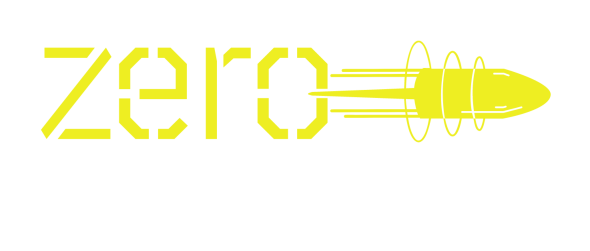Embark on a journey into the creative realm of Hedera Hashgraph in this exploration of decentralized technologies. Uncover the limitations of traditional blockchains, delve into the distinctive features of Hedera Hashgraph, and engage in a comparative analysis. We’ll navigate challenges, examine case studies, and discuss the future implications of this groundbreaking technology.
Enter Hedera Hashgraph
This crypto network emerges as a revolutionary alternative to traditional blockchains in the dynamic realm of decentralized technologies. Distinguishing itself with a unique consensus algorithm known as Hashgraph, Hedera offers a solution to scalability concerns by achieving asynchronous consensus. This innovative approach ensures efficiency and speed in transaction validation and addresses long-standing challenges in decentralized networks.
The Hashgraph consensus algorithm sets itself apart by allowing for parallel processing of transactions, eliminating the need for sequential order. Notably, its versatility extends to various sectors, from financial services to supply chain management, showcasing its potential impact on industries beyond cryptocurrencies. As discussions surrounding the future of decentralized technologies gain momentum, Hedera Hashgraph’s unique attributes spark curiosity. Observers within the crypto community explore its practical applications and engage in speculative conversations, including the intriguing topic of Hedera price prediction.
Comparative Analysis
Hashgraph’s consensus mechanism sets it apart. Unlike the energy-intensive proof-of-work or stake-locking proof-of-stake, Hashgraph achieves consensus asynchronously, eliminating the need for extensive computational efforts or large stake holdings. This agility translates to efficient transaction validation and addresses scalability concerns that often burden traditional blockchains.

Its parallel processing capabilities bring a notable edge in real-world applications. Industries requiring high transaction throughput, like finance and supply chain management, benefit significantly from its speed and efficiency. Traditional blockchains, operating with linear transaction validation, struggle to match the swift processing offered by Hashgraph.
Advantages of Hedera Hashgraph
The main advantage of Hedera is the noticeable acceleration in transaction speed, attributed to Hashgraph’s asynchronous consensus. In contrast to the sequential validation of traditional blockchains, Hedera Hashgraph processes transactions concurrently, ensuring faster speeds and elevating user experiences. This speed enhances the efficiency of transactions and positions this crypto network as an optimal solution for applications requiring rapid and secure transaction processing.
Addressing scalability challenges inherent in blockchain systems, Hedera Hashgraph introduces a breakthrough with its parallel processing capabilities. By enabling simultaneous validation of multiple transactions, Hashgraph presents a promising avenue to overcome the scalability limitations that have historically hindered decentralized systems. This scalability boost contributes to the platform’s adaptability across various industries and makes this crypto network a robust contender in the evolving landscape of decentralized technologies.
Challenges and Criticisms
One prominent critique revolves around potential centralization concerns tied to its governance model. Hedera’s approach may introduce central control elements, deviating from the decentralized principles that define traditional blockchain systems. This ongoing debate within the crypto community highlights the delicate balance between governance structures and maintaining decentralization.
The adoption journey is another hurdle for the crypto network. Convincing established industries and enterprises to migrate from familiar blockchain systems to this innovative technology poses a gradual and intricate process. Overcoming inertia in existing infrastructures and gaining widespread acceptance requires strategic efforts, and Hedera Hashgraph’s success in this regard will shape its role in the broader landscape of decentralized technologies.
Use Cases and Innovations
It showcases its adaptability through innovative use cases that extend across diverse industries. The platform facilitates microtransactions in finance with its rapid transaction speeds and cost-effectiveness. That opens new avenues for content monetization and pay-per-use services, leveraging Hedera’s efficiency in handling high transaction volumes.
The gaming industry has also embraced Hedera Hashgraph, leveraging its in-game microtransactions and asset tokenization capabilities. Unlike some blockchain platforms facing scalability hurdles, Hedera’s efficient transaction processing ensures a seamless experience for gamers. The crypto network is preferred for applications demanding quick and secure in-game transactions.

In the realm of supply chain management, Hedera Hashgraph stands out for its real-time data processing capabilities. Enhancing traceability and reducing inefficiencies, Hedera offers a robust solution for industries relying on intricate supply chain data. That sets it apart from certain blockchain platforms, which may encounter challenges in delivering the same level of real-time data processing and scalability.
Future Outlook
The trajectory of Hedera Hashgraph points towards a promising future marked by continuous innovation in the decentralized technology landscape. Anticipated developments include ongoing efforts to address criticisms, ensuring heightened security and transparency. Hedera’s agility in tackling real-world use cases positions it for sustained improvement, with a focus on scalability and interoperability to broaden its market appeal.
Key to Hedera’s future success is the prospect of enhancements that tackle scalability and foster interoperability with existing systems. These improvements alleviate adoption challenges and position Hedera as a versatile solution across diverse industries. Strategic partnerships and collaborations are expected to be crucial, potentially elevating it to new heights in the decentralized technology space.
Conclusion
Hedera Hashgraph stands at the forefront of decentralized technologies, offering a compelling alternative to traditional blockchains. Its innovative consensus mechanism, Hashgraph, addresses scalability concerns and accelerates transaction speeds, showcasing its potential in diverse applications such as finance, gaming, and supply chain management. While facing challenges and criticisms, its ongoing developments, focusing on security and interoperability, position it for continued success.
As we anticipate the future, Hedera Hashgraph’s adaptability and potential strategic partnerships signal a trajectory of sustained growth. Its impact on the broader decentralized landscape suggests a paradigm shift in consensus mechanisms. Stay adjusted as we delve deeper into case studies and emerging trends, providing a comprehensive understanding of Hedera’s dynamic journey and its pivotal role in the future of decentralized technologies.














